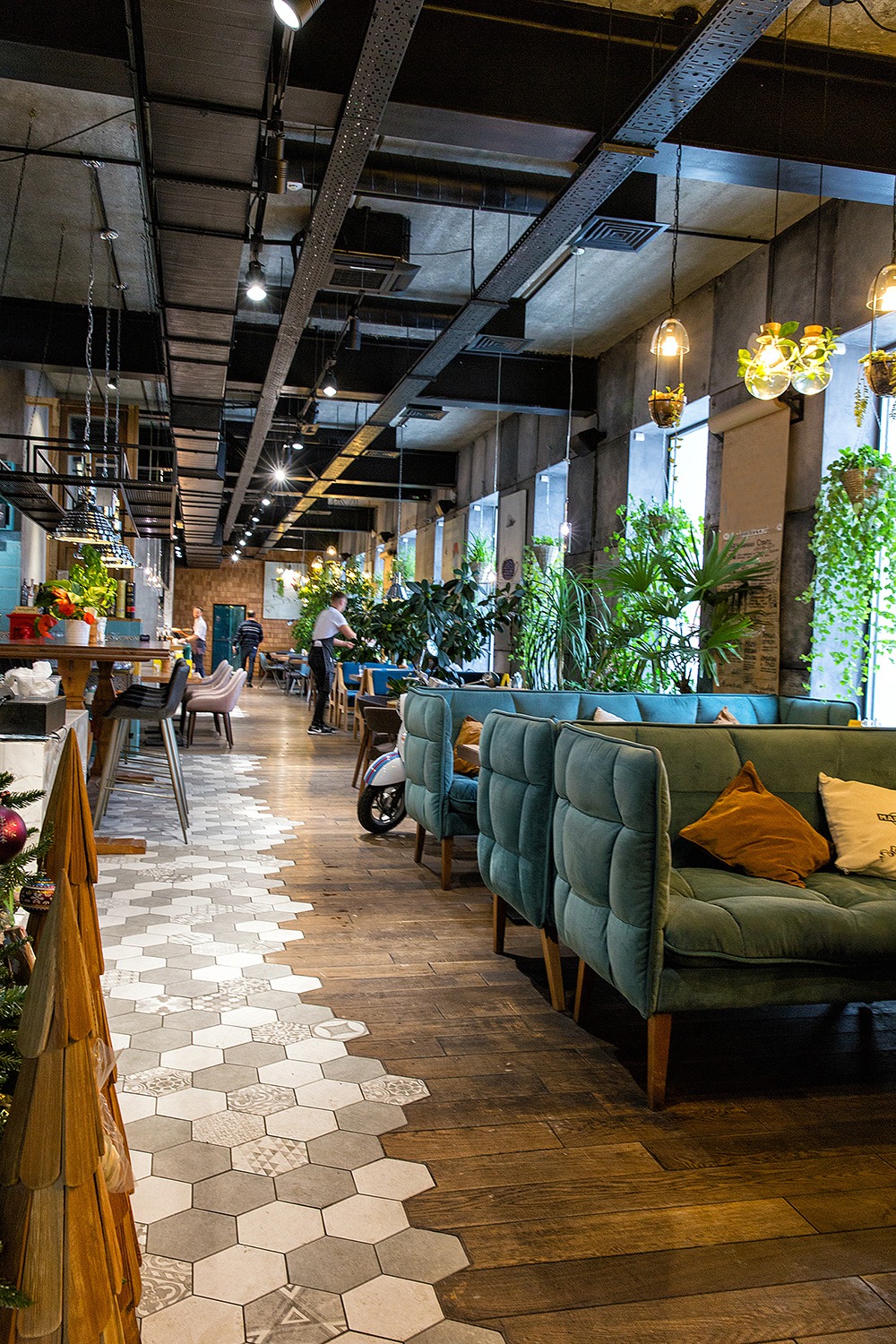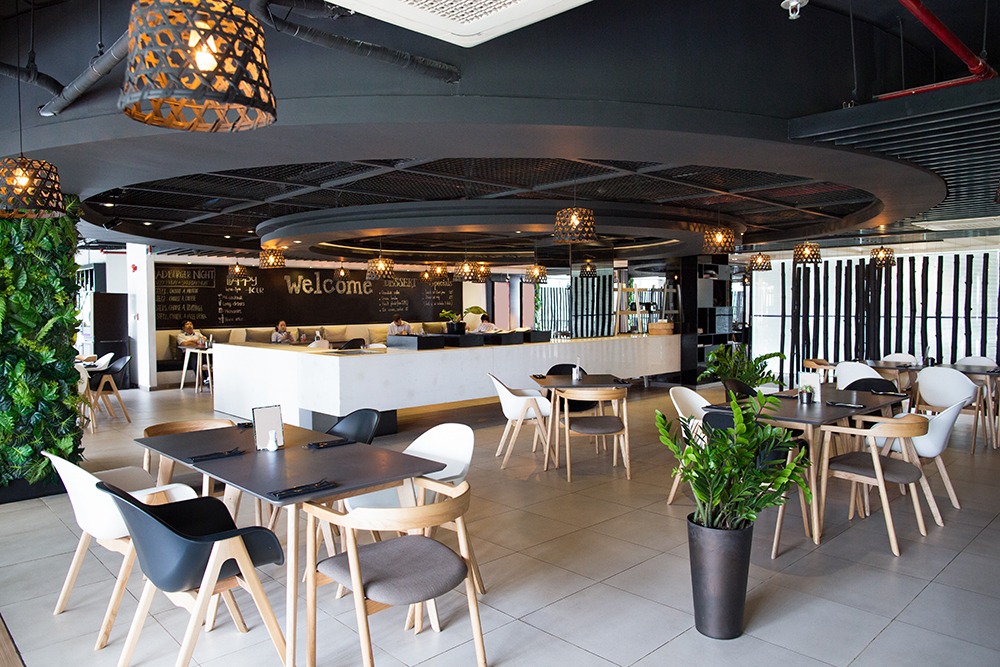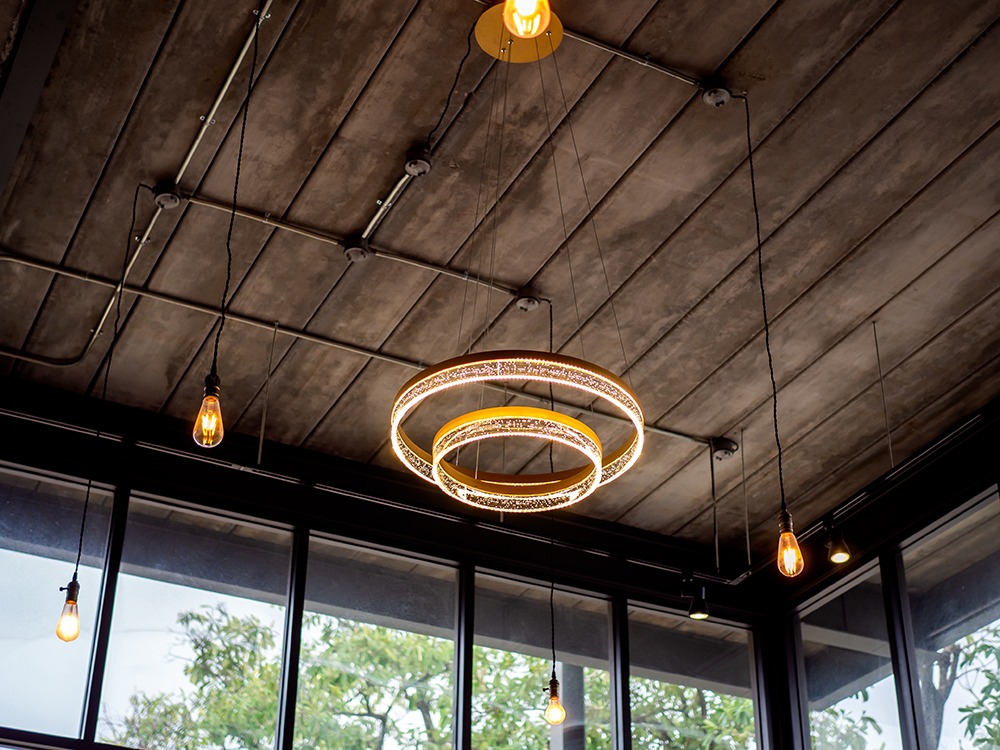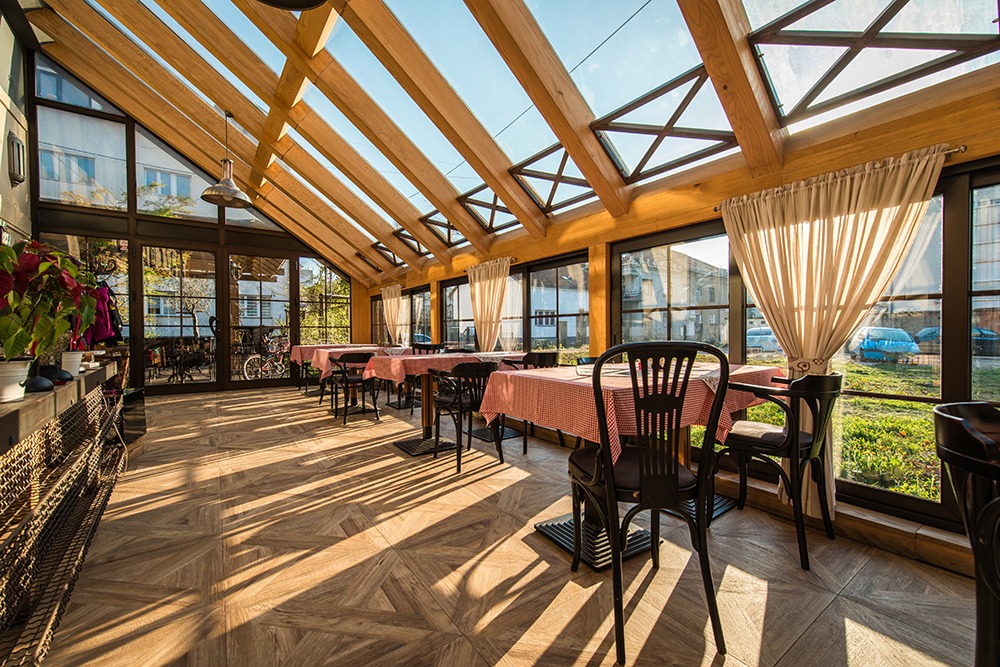Wooden floors
Wood is a popular choice in restaurant flooring design. Its popularity is mostly due to the warmth and appeal of the material, which adds sophistication and value to the design. A wide variety of wooden floors and materials allows designers to tailor the flooring design to suit any restaurant design need. Rich, deep-coloured hardwood floors give the space a feeling of elegance, perfect for high-end restaurants and fine-dining establishments. Reclaimed wooden floors, or softer, lighter-toned wooden floors represent a great choice for modern bars, bistros and casual restaurants.

With the right finish, wooden floors can last a lifetime. They are extremely long-lasting and resilient against the day to day wear. With regular maintenance and care, wooden floors retain their aesthetic appeal for decades. Nevertheless, wooden floors are sensitive to humidity and moisture, as well as to fluctuations in temperature. This makes them less than ideal in outdoor seating areas or spots with high humidity.
Vinyl flooring
Vinyl floors are amongst the most affordable flooring materials. In recent years, vinyl flooring has become an increasingly popular choice for all kinds of commercial spaces. Besides being a budget-friendly option, vinyl flooring is also extremely durable and versatile. Available in a great variety of colours and patterns, they can be easily adapted to suit any design.
Vinyl floors are also easy to install and to maintain. High-quality vinyl tiles are water and scratch-resistant and hold up well against daily wear. In case of damage or stain, vinyl tiles can be easily and quickly replace. This allows restaurateurs to keep floors looking their best for longer.
Ceramic tiles
Ceramic tiles represent another popular choice in restaurant flooring design. Besides offering incredible durability, ceramic tiles come in a wide range of style, colours and textures, which makes them ideal in both formal and casual catering environments.
The main advantage of ceramic tiles is that it requires minimal upkeep, and it is easy to keep clean and to sanitise. At the same time, ceramic tiles are stain and scratch-resistant and are fully waterproof. Nevertheless, it is important to choose tiles coated with a slip-resistant finish to minimise the risk of injuries.
Carpeting
Carpet floors are often used in the flooring design of high-end restaurants. They give a luxurious feel to any interior space and offer the best sound-absorbing qualities. This makes them ideal in busy dining areas, where creating an intimate feel and reducing background noise are top priorities.
The lower price and installation cost of carpeting makes this type of flooring material easy to install and quick to replace. As an incredibly versatile restaurant flooring option, it is available in different colours, patterns and styles, which makes it easy to integrate into any design scheme.
Carpet floors do, nevertheless, have one main disadvantage. They are difficult to keep clean and require constant maintenance. Carpeting is susceptible to staining and collects dust and moisture, which can lead to mould formation or mildew. As a result, carpet floors require regular and thorough cleaning and should be regularly replaced.
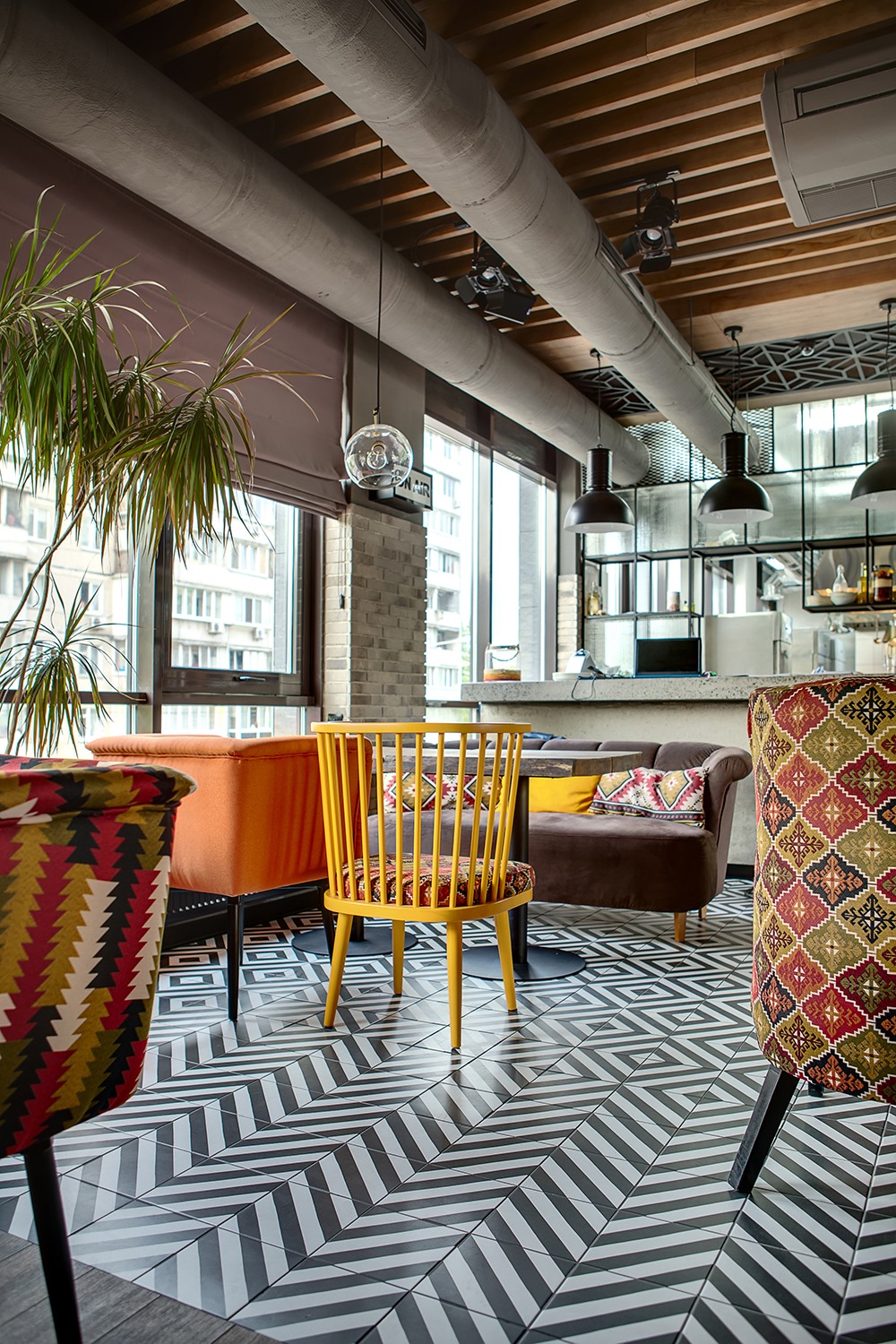
Composite and natural stone flooring
Stone flooring is an incredibly durable flooring material, that also has a high aesthetic value. Composite stone flooring, made of small, compressed bits represents a popular, easy to maintain flooring option that can add huge value to any dining area design.
Composite and natural stone flooring have a unique charm, which creates a warm and welcoming ambience. This type of flooring material allows designers to create unique flooring designs and set the restaurant apart from all other restaurants in the area. The use of different types of stones allows designers to create designs that perfectly fit the decor. They are relatively easy to maintain but might be somewhat expensive to install or replace.
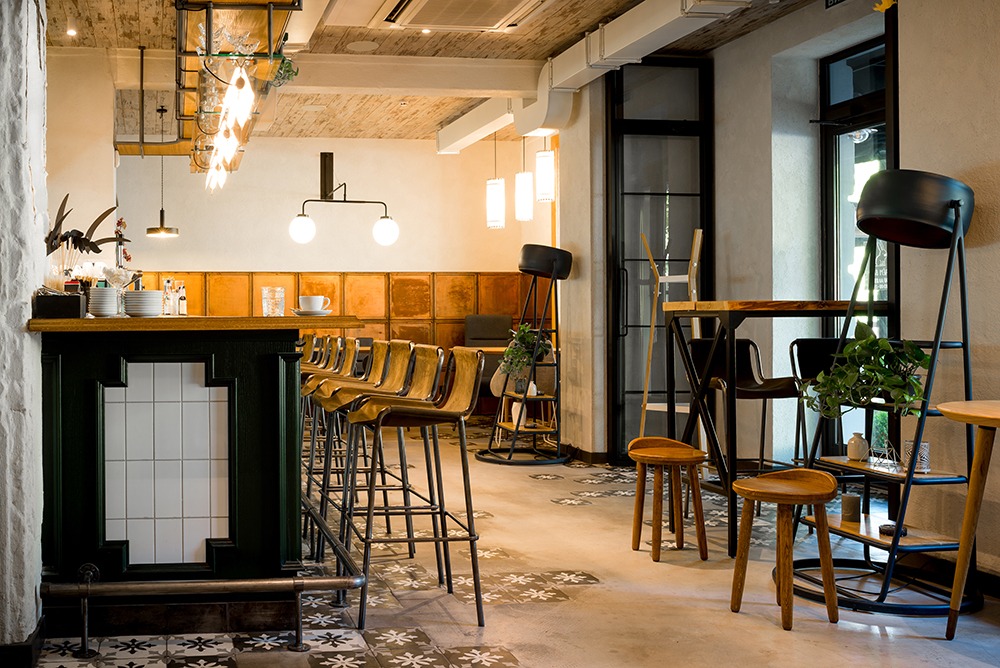
Concrete flooring
Concrete is an affordable and eco-friendly choice in restaurant flooring design. Acid-stained or stamped polished concrete can mimic various surfaces and allows designers to break away from the industrial feel of unadorned concrete.
Well-sealed and polished concrete represents a great, low-maintenance flooring option for high-traffic areas. Concrete floors are extremely durable and meet all health and safety standards for restaurants. They are water and slip-resistant, which makes them easy to clean and safe to walk on. Through the use of various treatments and finishes, designers can create intricate flooring designs and strong focal points to enhance the restaurant interior design.
Eco-friendly flooring options in restaurant flooring design
Sustainability and the use of eco-friendly materials have been at the forefront of restaurant interior design in recent years. Restaurant owners who are conscious of their environmental footprint might opt for alternative flooring materials that help reduce the ecological impact of their business.
Some of the most popular eco-friendly flooring materials for restaurants include:
- Bamboo floors. Bamboo is a cost-effective, environmentally-friendly and renewable flooring material that offers durability and versatility in terms of design. Its warmth and appeal add great value to any interior space. Bamboo floors are easy to install and maintain, nevertheless they are susceptible to water damage.
- Sandstone tiles and flooring. Sandstone is another eco-friendly and bio-degradable flooring material. Well-sealed sandstone is extremely durable and slip-resistant. It is also easy to install, replace and maintain, which are all crucial in restaurant flooring design. Available in a plethora of colours and rich shades, sandstone floors add a unique charm to any design.
- Cork flooring has a warm, natural look, which makes this flooring material a great choice for casual dining spaces. Properly sealed cork floors are easy to maintain and clean, and they can help hide small imperfections. Cork panels are available in several shades and colours, offering a level of freedom in terms of design. Their soft, cushioned surface makes them comfortable underfoot.
